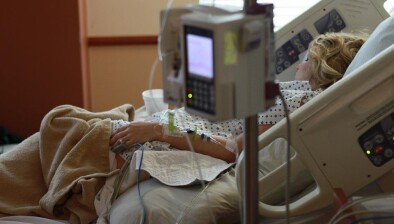Care home visiting restrictions eased

Care home residents and their family and friends will soon be able to enjoy longer visits together and greater personal interaction, health secretary Jeane Freeman has announced.
Updated guidance published by the Scottish Government recommends easing restrictions on visiting in a range of ways, including extending indoor visits from 30 minutes to up to four hours.
Outdoor visits can be extended to include up to six visitors from no more than two households, including children and young people, for up to one hour per visit.
The new guidance also supports increased personal interaction, including hugs or hand holding, as long as strict PPE and infection prevention control measures are met.
These include:
- Personal interaction – visitors can support personal care and daily routine activities, provided this is agreed with the care home and takes place in residents’ rooms
- Touch – enabling contact with loved ones with regular training and supervision for visitors to put on and take off PPE and safety guidelines
- Family pets and therapy animals – during outdoor and indoor visiting, if agreed with the care home, and certain pre-conditions are met
- Gifts and residents’ belongings – can be brought in by visitors, when agreed with the care home manager in advance
These changes will require careful planning by care homes so will be implemented once care homes are satisfied that they can be accommodated safely, alongside existing safety measures such as the weekly testing offered to all care home staff, and sample testing in homes with no cases.
Local PPE Hubs are also in place across Scotland through Health and Social Care Partnerships to support the social care sector with PPE supplies for staff and visitors, in addition to care homes’ existing supply routes.
Health secretary Jeane Freeman said: “We know how difficult visiting restrictions have been, and it is only natural after six months of lockdown restrictions, that care home residents and their loved ones will want to see and interact with each other as much as possible.
“The Scottish Government has been actively working with Scottish Care and other care home stakeholders on a staged approach to re-introduce visiting in care homes in as safe a way as possible, while COVID-19 remains in Scotland.
“This latest guidance has been developed with input from family members, carers, and clinicians to offer greater flexibility in visiting arrangements, and indoor visiting in particular, as winter approaches. We will continue to actively consider how we can best support visiting in care homes, and protect those who are at most risk from this virus.”
Age Scotland has warmly welcomed the changes. Brian Sloan, chief executive of Age Scotland, said: “This has been a long time coming but it will nonetheless will be a huge boost for care home residents and their families, who have really struggled with the lack of contact since March.
“Family members can at long last visit their loved ones in care homes for up to four hours, indoors and, where it safe to do so, hold their hand for the first time in almost seven months. The importance and benefits of this cannot be underestimated.
“This is something that care home residents and their families have rightly been crying out for as they grew increasingly concerned about the negative impact it was having on their health and well-being. Their wait has been excruciating.
“We have heard from many families who have been seriously alarmed by the decline in the health of their loved one during lockdown, in part because of enforced isolation to avoid the spread of coronavirus. We have been making the case to the Scottish Government that every effort must be made to resume indoor visiting as the ongoing risk to the person’s health by not doing so is substantial.
“It is essential that increased visits to care homes are now available to everyone wherever possible. With PPE and other protective measures in place, older people in care homes will be able to reconnect with their relatives and feel part of their family again.”









